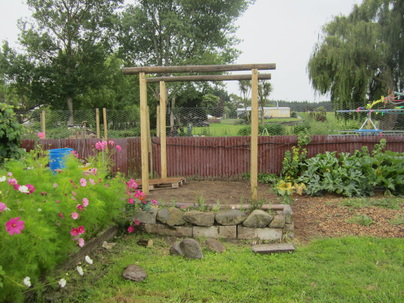
With help from my son and his friends (fortunately all well over 6 feet tall!), the beginnings of my seating area was erected - 4 posts, with old fence posts across the top. The plan is to have a swing seat underneath and trellis up the sides and over the top, covered in fruiting vines, creating a shady place to sit in summer and survey the garden.
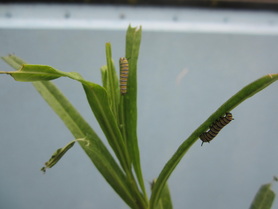
| LOVE completely home-grown meals - lamb, potatoes, pumpkin and tender green beans, all from our wee homestead. Feeding the family with meals we're rolled up our sleeves and grown or raised, then harvested and butchered all by ourselves feels really good! And you KNOW it's got to be better for our bodies and our pocket. |
| We acquired two beehives over summer - looking forward to home-produced honey. The smaller hive contains a captured swarm. Photo taken just after they arrived - soon to be inspected and extra boxes added if needed. I'm allergic to bees, but looking forward to learning how to care for them. Fortunately my husband spent a year working for a commercial beekeeper 16 years ago, so knows quite a bit already. I have it on good authority that these two hives and lovely, mild-mannered bees. |
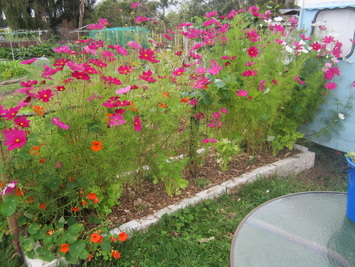
This is also the first time I've successfully grown nasturtiums - next year I might even try pickling some of their seeds to use like capers.
| When we bought the property 8 years ago, there was this pathetic wee dwarf peach tree down the back behind the sheds. The last guy told me he'd run it over with the lawnmower twice. Most years it tried to produce a few small peaches, but either the goat or sheep would manage to get to it and chew them off, or the fruit would drop before ripening. I think ONE year we managed to taste an ok peach or two. Last year, I asked a visiting arborist when would be a good time for me to move it to a better location. After checking it out, he told me not to waste my time, as it was more than half dead. He cut off one side to show me. So I just ignored it, intending at some point to dig it out, and also get a new peach tree or two. Well, this past summer, it suddenly grew a LOT and produced a lovely crop of luscious peaches! (Most are behind it in this pic). I think being between the greenhouse and plant nursery area probably had something to do with it - because when I would use the hose to water the other plants, I would finish by laying it down near the tree while walking back to turn the tap off. First time the poor thing has ever had summer watering. Guess it gets to live after all! Going to be extra nice to it now and get rid of the grass and weeds around it. |
| After re-watching my favorite organic gardening film, Back To Eden (which can be watched free online HERE), I was thinking about how wonderful it would be to use lots of wood chip in the garden, as wood chip is wonderful at absorbing water, then releasing it as the surrounding soil dries out - effectively acting as a sponge. It is also an excellent mulch, suppressing weed, retaining soil moisture, and as the lower layers slowly compost, adding a lot of nutrient to the garden. But it costs more than I have to spend. Fortunately a local contracting crew turned up not long after that, wanting to know if I would like a truckload of woodchip (shredded trees), in exchange for a donation to their Friday night social hour. Yes please! |

| Do you recall all the sawdust mixed with horse manure my kids hauled home for me? (18 trailer loads!) We spread it out on top of cardboard on the front lawn, and over the summer used it to plant pumpkins, as I hadn't yet decided just how to develop this area, and didn't have time just yet. This photo was taken in Feb - the vines at the back were mostly transplanted from volunteer crown pumpkin vines that came up in the corn patch, and around the stakes, I had sown seeds of buttercup pumpkins. |
| Some other pumpkin plants popped up next to my compost bins, in a spot where there was a compost pile last year. So I draped them up over a rough structure next to them, and let them go for it. Why is it that "accidental" pumpkin plants are always stronger, more productive and healthier than ones planted on purpose?? |
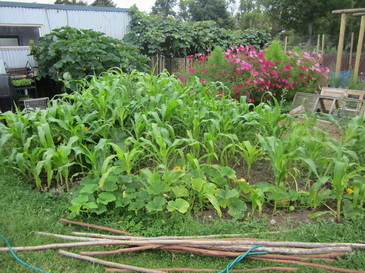
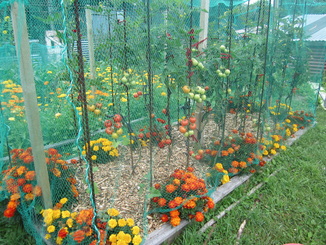
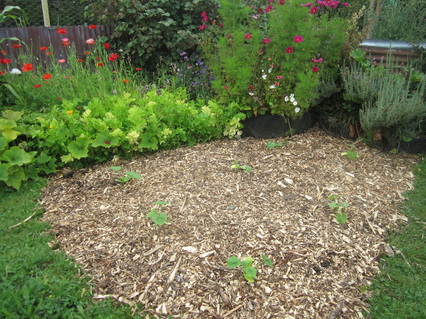
| Sunflowers along the fence - grown from some random sunflower seeds given to me by a kind neighbour. There is also some borage growing amongst it, which is as close to the strawberries as I could plant it (the strawberry patch is under the green netting you can just see). In the bottom right are calendula plants growing among the Roma tomatoes. |
| January's garlic harvest, plaited together and hung on the wall - I was very pleased with my first ever garlic crop, despite the fact that only one quarter of the cloves I planted grew (the other 3/4 were from the supermarket). The largest cloves will be replanted in June, and the rest we will eat. Garlic is grown by splitting the bulb into individual cloves, then planting the largest ones about 20cm apart in soil which has been enriched with plenty of compost and/or manure. The papery covers are kept on - they help to prevent the clove sprouting before the roots have established, and protect the clove from various soil organisms that could cause it to rot. The bigger the clove that is planted, the bigger the resulting bulb - some of these ones have huge cloves - can't wait to see what next year's crop looks like! |




You can also see in this pic the Stauntonia vine I've planted on one side of the seating area trellis - an unusual vine, it apparently can handle the cold, is evergreen, has nice flowers and produces a passionfruit-like fruit. Time will tell.
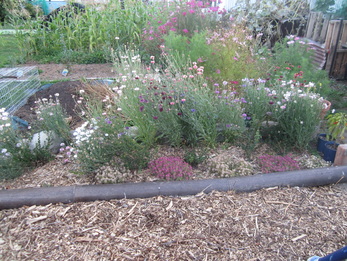
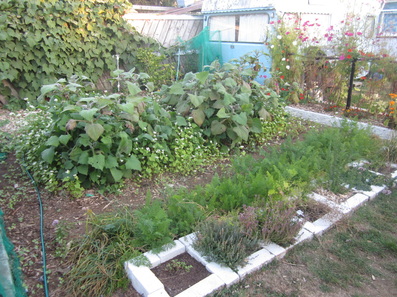
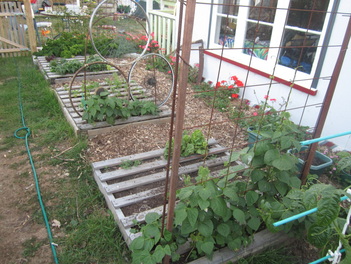

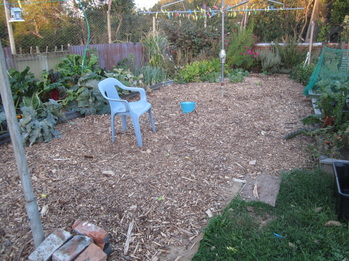
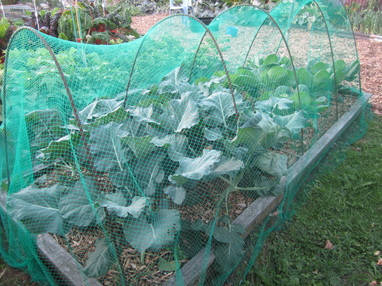



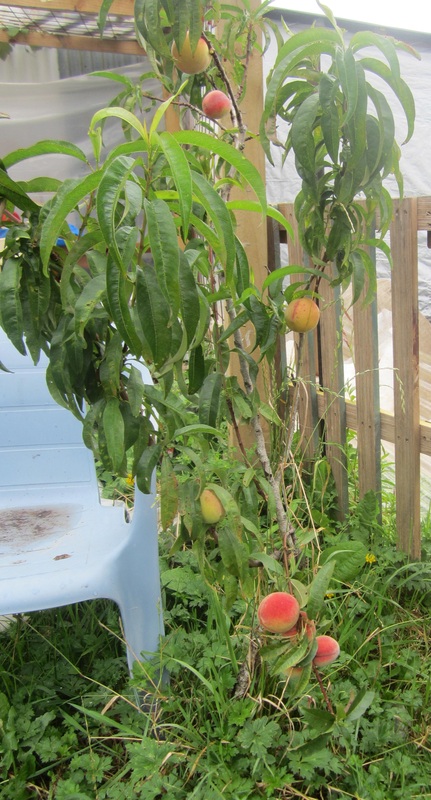


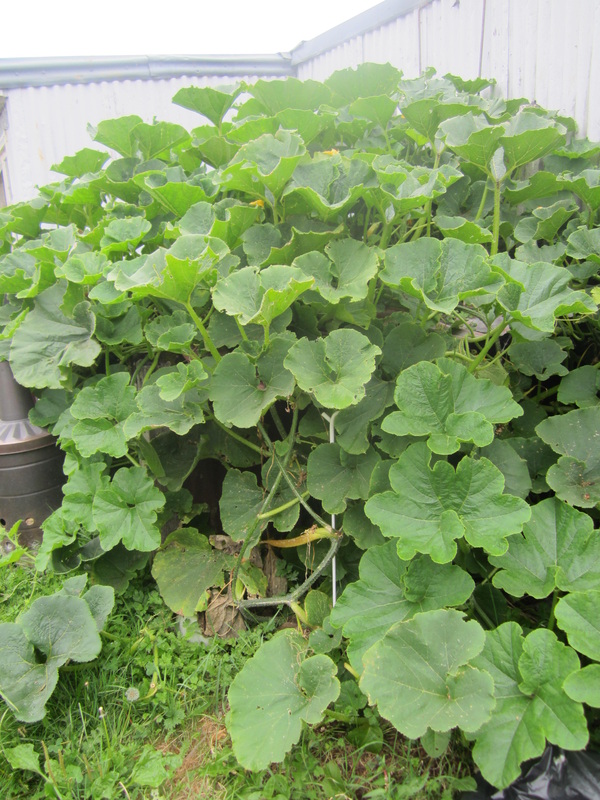
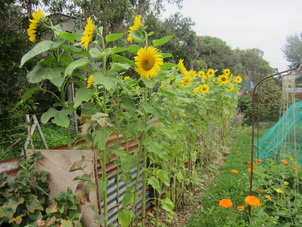



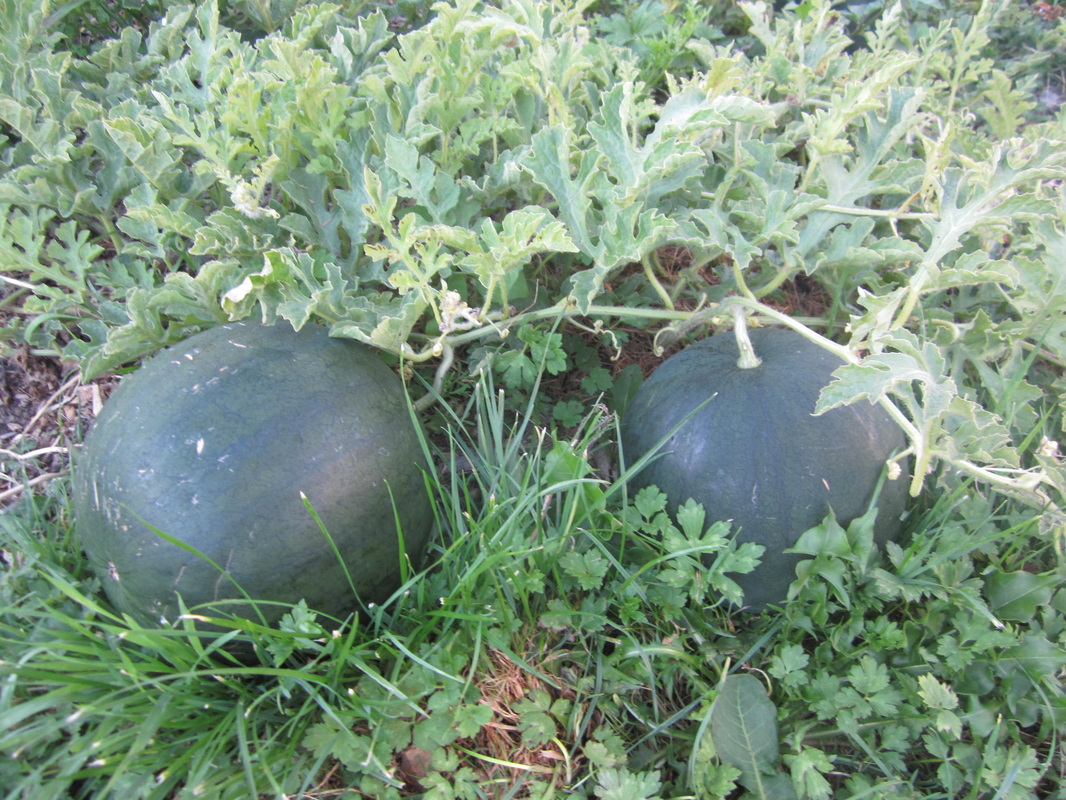
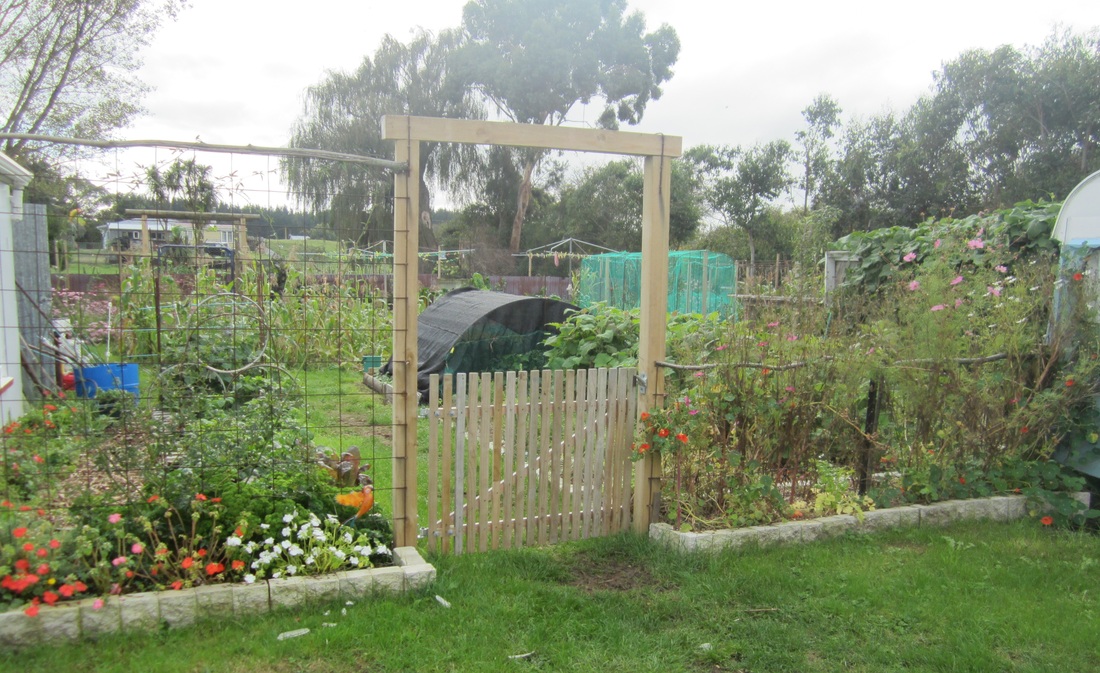

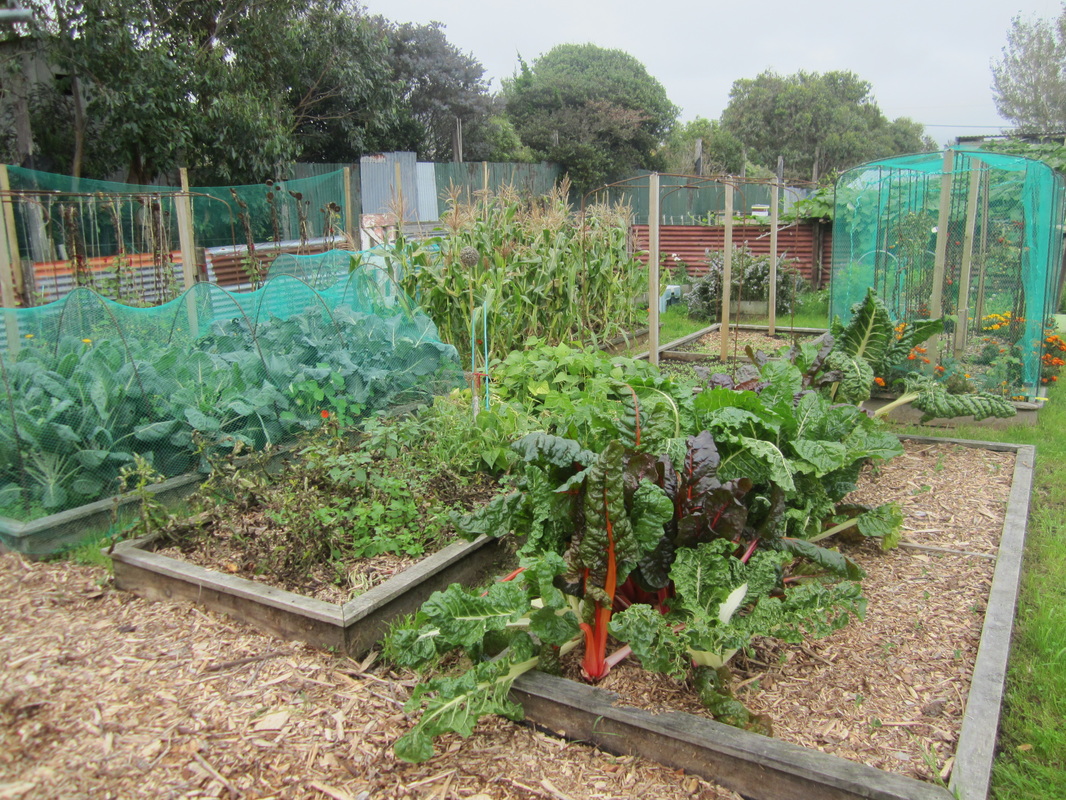
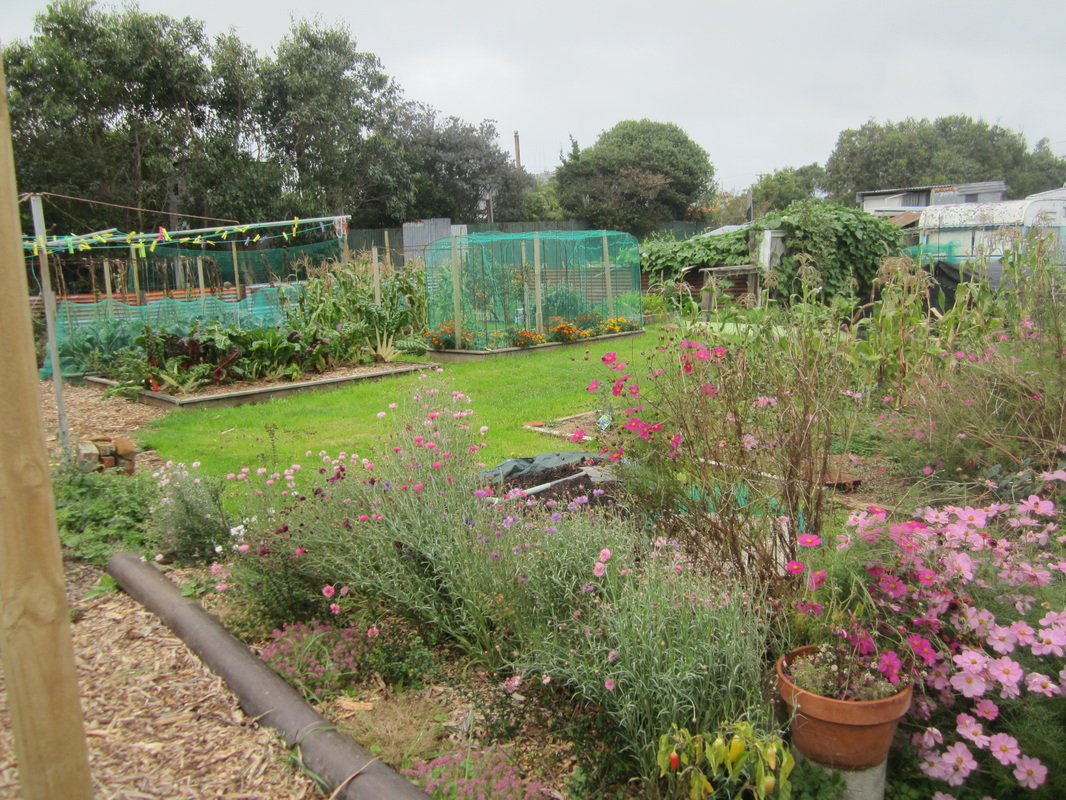
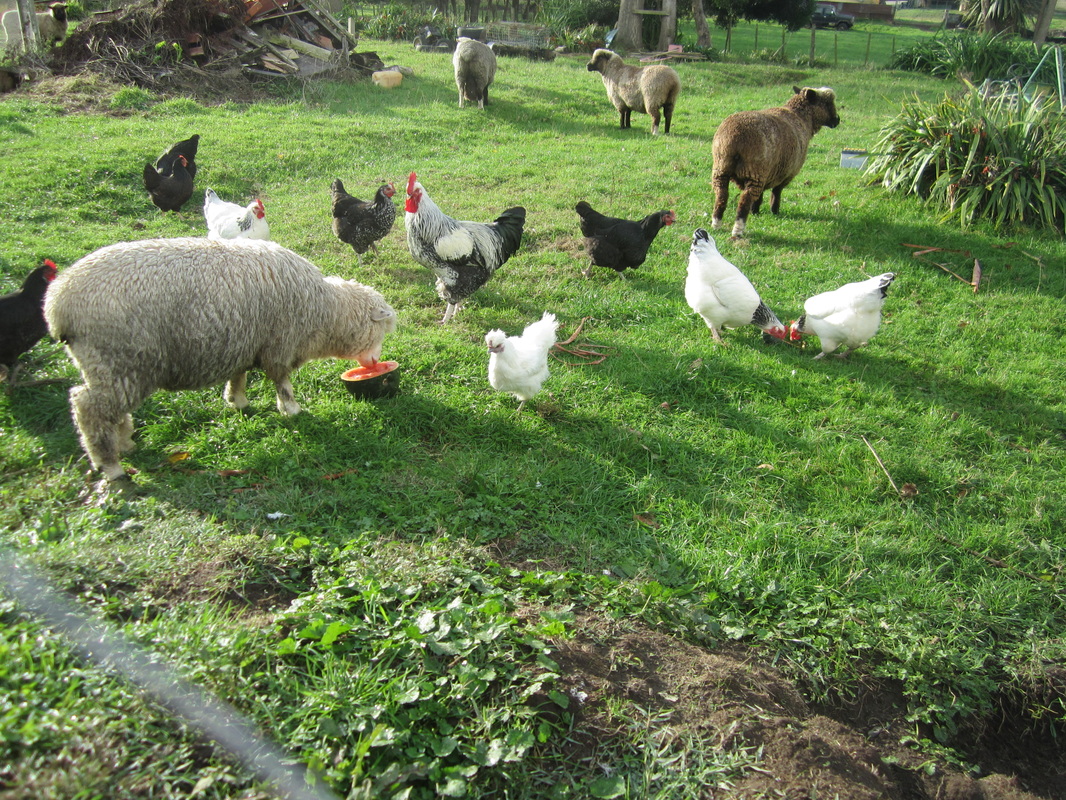

 RSS Feed
RSS Feed
